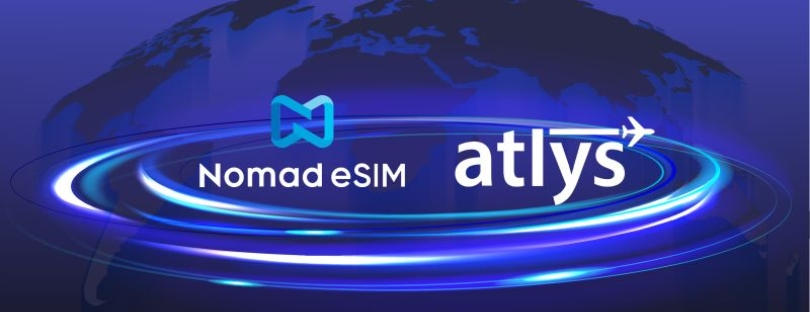
From Niche to Necessity: How eSIMs Became the New SaaS
There was a time when talking about eSIMs felt like talking about the future—shiny, exciting, slightly confusing, and definitely not something your average traveler used every day. They were this little niche curiosity tucked inside the newest iPhones and Google Pixels, whispered about by tech people who loved explaining things in diagrams.
Fast-forward a few years and… well, we’re here: eSIMs are no longer a “nice tech to have.” They’ve become something much bigger—a service, a platform, and for many companies, a full-blown SaaS-style business model. Think subscriptions, dashboards, automation, recurring revenue, APIs, onboarding funnels—yes, all the SaaS buzzwords are now living happily inside the travel connectivity world.
So how did we get here? How did a tiny virtual chip transform from a niche feature into one of the hottest digital services of the decade?
Let’s break it down like you and I are chatting over coffee—because honestly, that’s how the eSIM world makes the most sense.
eSIMs Started as a Device Feature—and Slowly Became a Business Model
When Apple quietly added eSIM support to the iPhone XS in 2018, no one imagined it would trigger this many new companies. At the time, eSIMs were framed as a hardware innovation:
- “No physical SIM tray!”
- “Switch carriers instantly!”
- “Finally, dual SIM for iPhone users!”
Great selling points, but nobody saw the goldmine behind them.
Because underneath the hardware story, there was a much bigger shift happening: telecom was moving to the cloud.
An eSIM isn’t just a SIM card you don’t have to touch.
An eSIM is software.
It’s a digital asset.
It’s programmable.
It’s sellable online—at scale—without logistics, shipping, or inventory.
And that one detail changed everything.
Why eSIMs Fit the SaaS Model—Almost Too Perfectly
Let’s be honest: the moment something becomes software, it becomes monetizable in a SaaS-friendly way. And eSIMs tick every single box.
✔ Zero physical logistics
No shipping. No warehouses. No lost packages. You send a QR code or app activation—done.
✔ Instant global distribution
You can sell Japan data packs from Lisbon. Or US unlimited plans from Bangkok. If your website is live, you’re global.
✔ Recurring revenue
Travelers don’t go on one trip.
Digital nomads don’t stop being nomads.
Remote workers don’t stop working remotely.
This naturally creates subscription-like behavior—monthly top-ups, automatic renewals, usage-based plans, and multi-country bundles.
✔ A perfect ecosystem for APIs
All major eSIM wholesalers and platforms now offer APIs so retailers can integrate:
- provisioning
- balance checks
- QR delivery
- real-time inventory
- pricing updates
This is textbook SaaS territory: software powering software.
✔ A real “platform” economy
The last two years have shown this clearly:
People don’t just buy eSIMs.
They compare them. Track them. Review them. Bundle them.
Platforms emerged—from marketplaces to travel apps—adding eSIMs as add-ons. It’s the same pattern we saw with fintech 10 years ago.
Suddenly, Everyone Wanted In—Startups, Telcos, Even Airlines
When a new technology becomes easier to sell, the number of players explodes.
And wow, did eSIMs explode.
Startups jumped in
Companies like Airalo, Nomad, Yesim, and Airhub didn’t exist a few years ago. Today, they’re brands travelers know by name.
Telcos followed
Vodafone, Orange, O2, AT&T—everyone eventually realized, “Oh. This isn’t a trend. This is the future of SIMs.”
Travel companies saw a new revenue stream
Airlines?
Travel agencies?
Travel insurance platforms?
All of them saw the same thing:
If travelers need connectivity, why not sell it to them?
eSIMs became the perfect add-on product. Zero risk, high margin, and unbelievably easy to integrate.
The Real Breakthrough: When the App Became the Product
Most people didn’t realize what truly made eSIMs “SaaS.”
It wasn’t the SIM card.
It was the app.
The moment eSIM companies launched apps with:
- user accounts
- dashboards
- stored payment methods
- automatic installation
- travel history
- usage tracking
- plan recommendations
…that’s when things changed forever.
The app became the core business.
The eSIM became a feature.
If that sounds familiar, it’s because it mirrors what fintech did.
For example:
Revolut isn’t “a currency card.”
It’s a financial operating system.
Likewise,
Airalo, Holafly, or any major eSIM app isn’t “a SIM seller.”
It’s a travel connectivity hub.
And that shift turned small eSIM shops into SaaS-style platforms almost overnight.
Travelers Pushed the Evolution Forward
Tech didn’t force eSIM to become SaaS.
Travelers did.
Here’s why:
✈ People wanted an easier setup
No more finding a shop at the airport.
No more guessing which prepaid card works.
No more language barriers.
A tap in the app? Absolutely yes.
✈ People wanted transparency
Data usage.
Expiration.
Speeds.
Coverage.
A clear dashboard? Necessary.
✈ People wanted flexibility
One week in Thailand.
Five days in Vietnam.
A month in Japan.
One SIM couldn’t cover it.
A subscription-like service could.
✈ People expected the same convenience as other apps
Think about it:
Every part of travel—booking hotels, buying flights, insuring trips—is digital.
Connectivity was the last piece that still felt old-school.
Travelers pushed eSIM companies to modernize.
eSIM companies responded by becoming SaaS businesses.
Meanwhile, The Infrastructure Quietly Matured
Behind the scenes, a lot had to happen to make all this possible.
And it did — fast.
• Wholesalers built flexible platforms
Connectivity providers started offering scalable eSIM packages that resellers could brand, price, and integrate however they wanted.
• GSMA standards matured
Profiles became easier to provision.
Devices became more compatible.
Activation processes became more standardized.
• Device support exploded
Today, almost every mid-range and flagship phone supports eSIM.
The barrier to entry disappeared.
• Global demand surged
COVID accelerated remote work, digital nomad life, long stays, and borderless lifestyles.
The world needed a cloud SIM.
The industry delivered.
So… Is Every eSIM Company Now a SaaS?
Not exactly—but many operate like one:
- They have a monthly recurring revenue.
- They use automation and APIs.
- They rely on software, not hardware.
- They focus on lifetime value over one-off sales.
- They invest heavily in UI/UX, onboarding, and funnels.
- They operate global digital storefronts.
This is SaaS, but with a telecom flavor.
And honestly, it’s one of the most fascinating transformations in the travel tech space.
Where This is Going Next
We’re just at the beginning.
The next stage?
eSIM as a service inside other services.
Think embedded connectivity in:
- travel credit cards
- hotel loyalty apps
- airline boarding passes
- fintech superapps
- co-working memberships
- digital nomad packages
- insurance apps
Connectivity won’t be a stand-alone product.
It’ll be a feature.
A benefit.
A button.
Just like cloud storage or VPNs.
Final Thought: eSIM Isn’t Just a Product — It’s a Category
What started as a tiny niche tech has now become a full ecosystem that behaves like SaaS, grows like SaaS, and scales like SaaS.
It solved a real problem.
It arrived at the right time.
And it hit the sweet spot between telecom and software.
eSIMs aren’t the future anymore.
They’re the present — and they’re becoming the backbone of how we stay connected when we move around the world.
And honestly?
It still feels like we’re only seeing the first chapter.














